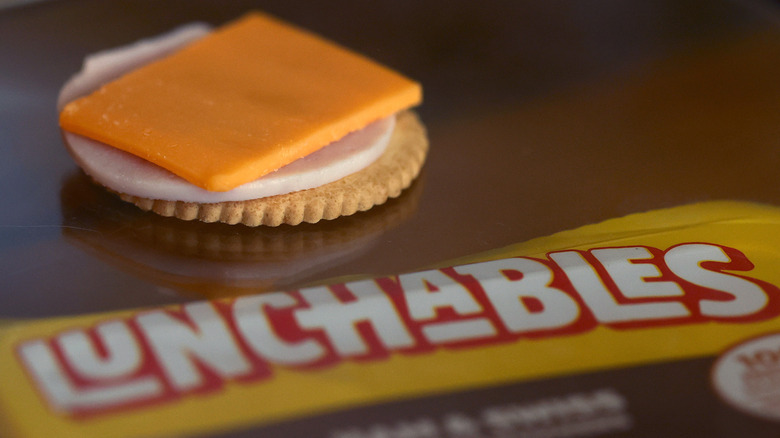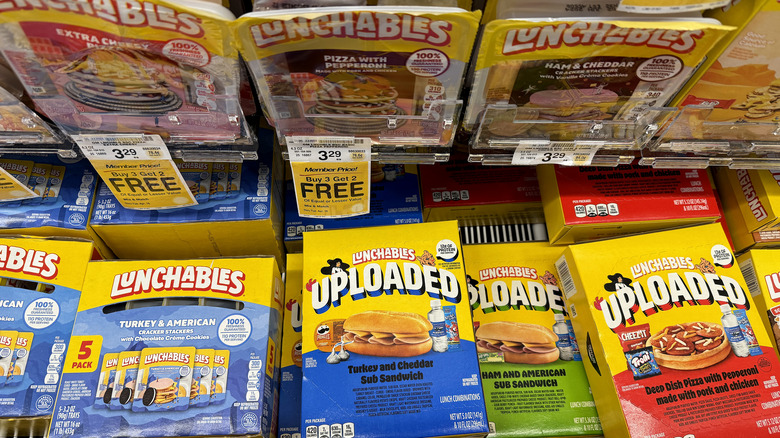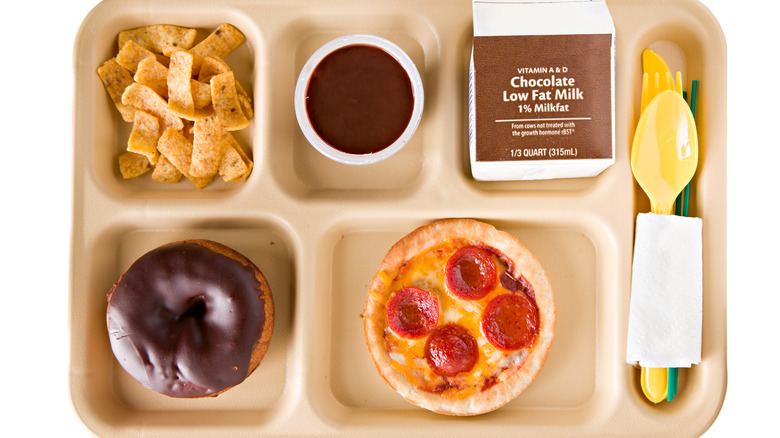Study Shows That Lunchables Contain High Amounts Of Lead
Even seasoned foodies will remember going to school with a bright yellow box of meat and cheese packed away for lunch. It's been known for a while that the small portion of processed items maybe wasn't the best source of calories, but nobody would've guessed a Lunchables box was cause for alarm. However, a recent study from Consumer Reports revealed that a greater amount of harmful chemicals are hiding in your snack pack than you may have thought.
The CR study looked at 12 different lunch and snack kits in stores today and discovered that nearly half of those tested turned out to have incredibly high levels of lead. Because there are few federal regulations related to the legal limit of lead in foodstuffs, Consumer Reports used California's maximum allowable dose level (MADL) as a benchmark for measuring the contaminants in these items.
All three Kraft Heinz-made Lunchables products tested showed they contained the highest amounts of lead compared to other snack kits at nearly or over 70% of the MADL. The specific products were the Lunchables Turkey and Cheddar Cracker Stackers, Pizza with Pepperoni, and Extra Cheesy Pizza brands. And to make matters worse, high amounts of lead were not the only concerning thing the study discovered lingering in Lunchables.
The study found more than lead
Consuming heavy metals such as lead has been associated with neurological problems and kidney damage. It's also been linked to developmental problems in children, the presumed consumers of the products. The EPA states on its website that, "[our administration] and the CDC agree that there is no known safe level of lead in a child's blood." Despite a law passed in October 2023 in California to require frequent testing and disclosure of toxin levels in baby food, few recent changes have been made at the federal level regarding heavy metals.
Some of the products tested also showed high amounts of cadmium, a metal known to cause cancer and kidney disease over time. The test further concluded that at least one phthalate — a chemical used to make plastic more durable — was present in every lunch kit tested. Phthalates are known to disrupt hormones in the body, which can lead to, according to CDC research, obesity, diabetes, and various cancers.
Though not classified as a toxin, the sodium content in these products was also astonishingly high. Consumer Reports reported that all the snack kits tested had at least 30% of the daily recommended sodium level, with some nearing 50%. Per the American Heart Association, children with high sodium intakes are roughly 40% more likely to experience high blood pressure than those who consume less.
Other products tested were also problematic
Unfortunately, it wasn't just the Kraft Heinz-produced Lunchables with products that tested high for lead. Consumer Reports tested Armour LunchMakers and discovered they contain 67% of the MADL for lead. Another product that showed an elevated amount of lead was the Good & Gather uncured ham and cheddar cheese lunch kit made by Target, clocking in at 57% of MADL (despite being produced in Canada).
Many schools have in-house versions of these lunch kits that meet the National School Lunch Program's standards. Because they have the school's blessing to be given to children, you'd assume they are healthier than the store-bought versions, but that's not necessarily the case. Consumer Reports did not test the school versions for heavy metals, but they did assess the nutritional information and list of ingredients. They found that the school versions of these snack kits contained more sodium than their store-bought counterparts.
Proper nutrition is a significant factor in the development of children. You can't avoid every harmful chemical under the sun, but you can limit a child's exposure to these substances by adjusting what you buy in the supermarket. It will eliminate some of the convenience of having lunches ready to go as soon as you walk out of the store, but if you are concerned about the elevated levels of sodium and other potentially harmful chemicals in your child's food, it might be worth considering sending them off to school with a classic homemade lunch.


